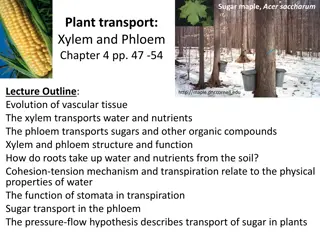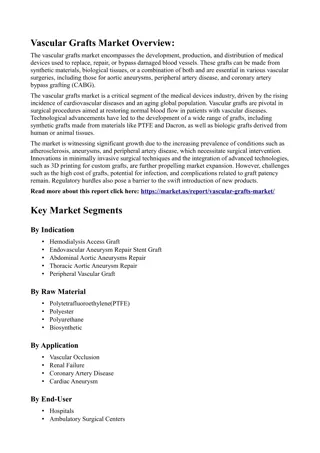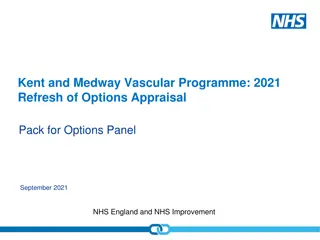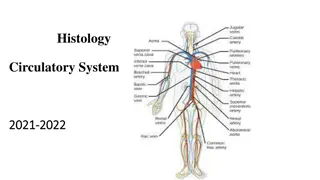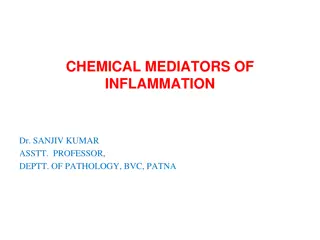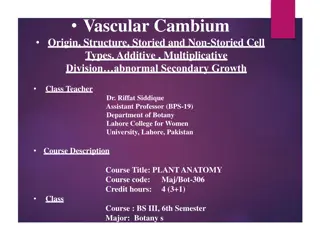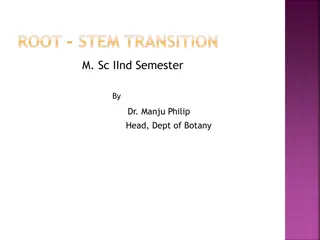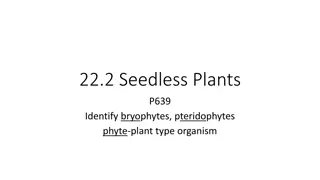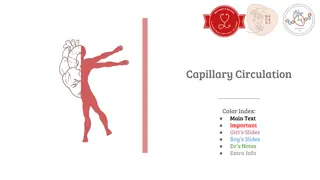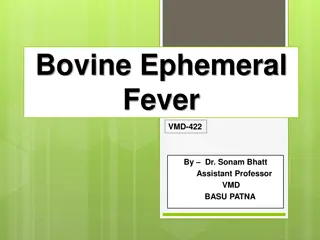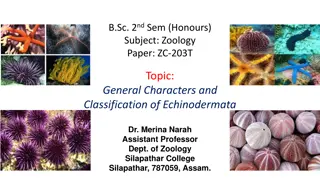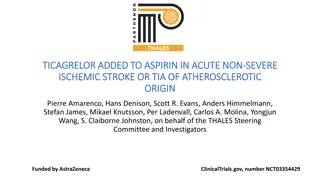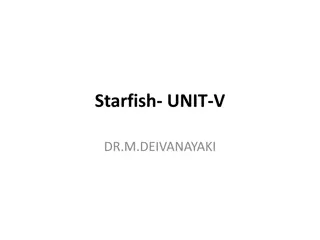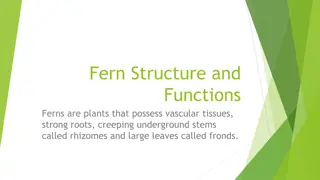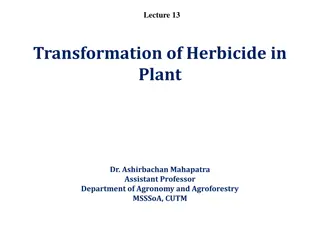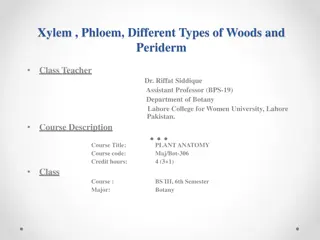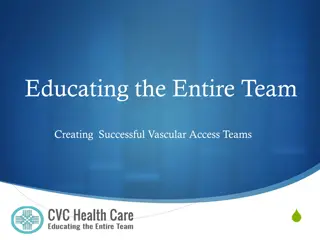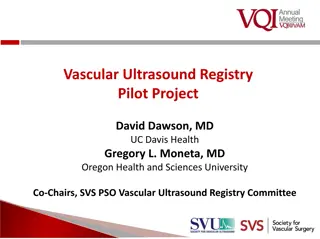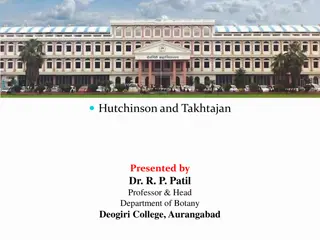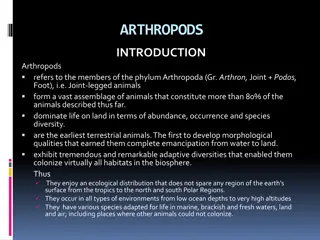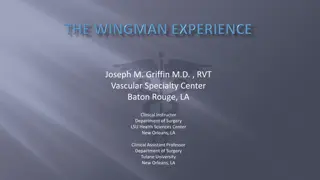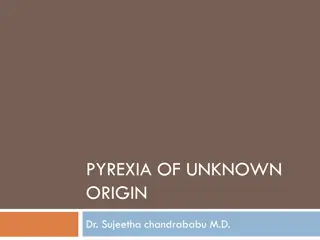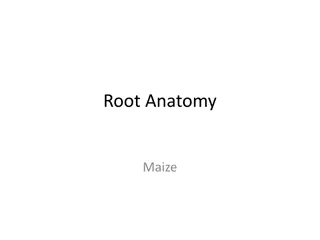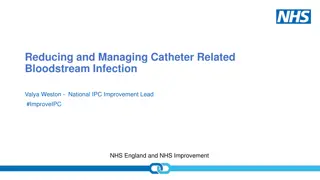Non Coronary Vascular Stents
Safe scanning of patients with non-coronary vascular stents (NCVS) in MRI settings in NHS Scotland. It covers key questions regarding the safety of patients with NCVS, including risks associated with MRI at different strengths, timing of MRI post-stent implantation, and the safety of various stent m
1 views • 9 slides
System Models in Software Engineering: A Comprehensive Overview
System models play a crucial role in software engineering, aiding in understanding system functionality and communicating with customers. They include context models, behavioural models, data models, object models, and more, each offering unique perspectives on the system. Different types of system
3 views • 33 slides
Understanding Plant Transport Systems: Xylem and Phloem
Explore the intricate system of plant transport through xylem and phloem, from how roots absorb water to the pressure-flow hypothesis in sugar transport. Learn about the evolution, structure, and function of vascular tissues and the critical role of transpiration. Dive into the classification of pla
3 views • 27 slides
Root Anatomy and Functions
The root system of plants consists of primary and secondary roots made up of dermal, vascular, and ground tissues. Roots play a crucial role in absorbing water and minerals, providing support, anchoring the plant, and storing food. Taproots and fibrous roots are two common types, each serving unique
2 views • 6 slides
Vascular Grafts Market
The Global Vascular Grafts Market size is expected to be worth around USD 5.7 Billion by 2032 from USD 3.1 Billion in 2022, growing at a CAGR of 6.40% during the forecast period from 2023 to 2032.\n\n
0 views • 3 slides
Male Reproductive System Overview
The male reproductive system is responsible for producing and delivering fertile sperm, as well as regulating hormones like testosterone. It includes the scrotum, testes, ducts, and accessory glands. Important functions include spermatogenesis, thermoregulation, and supporting secondary sexual chara
1 views • 22 slides
Kent and Medway Vascular Programme: 2021 Refresh of Options Appraisal
The Kent and Medway Vascular Programme underwent a review in 2014 that identified the need for a different setup of vascular services due to existing providers not meeting national standards. Subsequent options appraisals in 2016 and beyond led to the recommendation of a single dedicated specialist
0 views • 21 slides
Understanding the Circulatory System: A Detailed Overview
The circulatory system plays a vital role in transporting nutrients, oxygen, and other essential substances throughout the body. It consists of the blood vascular system (arteries, arterioles, veins, capillaries, and the heart) and the lymphatic vascular system. Understanding the general structure o
0 views • 31 slides
Overview of Chemical Mediators of Inflammation and Their Roles
Chemical mediators of inflammation act on blood vessels and cells to contribute to an inflammatory response. These mediators include vasoactive amines like histamine and serotonin, plasma proteases such as the complement, kinin, and clotting systems, and important inflammatory mediators like C3a and
1 views • 24 slides
Hemostasis and Blood Coagulation Mechanisms Explained
Hemostasis refers to the prevention of blood loss through vascular constriction, platelet plug formation, blood clotting, and fibrous tissue growth. Vascular constriction occurs immediately after vessel damage, initiated by myogenic spasm, autacoid factors, and nervous reflexes. Platelet plug format
0 views • 25 slides
Understanding Vascular Cambium in Plant Anatomy
Vascular cambium is a crucial growth layer in stems and roots, responsible for producing xylem and phloem in plants. It originates from the maturation of procambium cells, differentiating into storied and non-storied cell types. It plays a vital role in secondary growth by generating new wood in woo
0 views • 26 slides
Understanding Vascular Transition in Root-Stem Structure
Root and stem in plants form a continuous structure with a transition region between them. The transition involves twisting and inversion of xylem strands, leading to variations in vascular bundles. Eames and Mac Daniels identified different types of vascular transitions in dicots and monocots, each
1 views • 13 slides
Understanding Cellular Events in Inflammation and Repair
Explore the lecture on Cellular Events in Inflammation by Dr. Maha Arafah, focusing on the sequence of vascular changes in acute inflammation, phases of changes in vascular caliber and flow, and objectives covering leukocyte extravasation, chemotaxis, phagocytosis, and microbial killing. Reference m
0 views • 47 slides
Understanding Seedless Plants: Bryophytes and Pteridophytes
Explore the world of seedless plants through bryophytes and pteridophytes. Learn about the characteristics of green algae, the life cycles of these plants, and how vascular tissue impacts their growth. Discover the limitations and importance of vascular tissue in plants, from the small yet significa
0 views • 8 slides
Pharmacological Management of Alzheimer's Disease and Cognitive Enhancers
Cognitive enhancers play a crucial role in managing Alzheimer's Disease, with Cholinesterase inhibitors (AChEI) like Donepezil, Galantamine, and Rivastigmine recommended for mild to moderate AD, and Memantine for moderate to severe cases. These medications act through different mechanisms, with AChE
0 views • 46 slides
Understanding Capillary Circulation in the Vascular System
This content delves into the intricate components of capillary circulation, covering topics such as microcirculation, types of capillaries, regulation of flow in capillary beds, and the formation of interstitial fluid. It also discusses edema, lymphatics, diffusion, and filtration processes. The vis
4 views • 28 slides
Understanding Bovine Ephemeral Fever: Key Information and Insights
Bovine Ephemeral Fever, also known as Three-Day Sickness or Three-Day Fever, is an economically important arboviral disease affecting cattle and water buffalo in tropical and semitropical regions. It is caused by an arthropod-borne rhabdovirus and primarily transmitted by mosquitoes and biting midge
0 views • 19 slides
Clinical Notes on Vascular Line & Fluid Therapy by Dr. Ali Egab
This collection of clinical notes by Dr. Ali Egab covers various aspects of vascular access, types of veins used for IV therapy, considerations in vein selection, equipment for IV therapy, cannula gauge, rate of infusion, and local complications of vascular lines. The notes provide valuable insights
0 views • 22 slides
General Characters and Classification of Echinodermata in Zoology: B.Sc. 2nd Sem
Echinoderms, marine animals with radial symmetry, feature a unique water vascular system. This content covers their general characteristics, five classes, and a classification table. Dr. Merina Narah from Silapathar College, Assam, presents valuable insights into the fascinating world of Echinoderma
0 views • 5 slides
Pediatric Vascular Access Techniques and Considerations
This article discusses various vascular access methods in infants and children, including peripheral IV access, central venous access, arterial lines, and ultrasound-guided techniques. It covers indications, sites, complications, and techniques for each method, emphasizing the importance of proper a
1 views • 56 slides
Ticagrelor Added to Aspirin in Acute Non-Severe Ischemic Stroke or TIA of Atherosclerotic Origin
Among patients with transient ischemic attack (TIA) or minor ischemic strokes, adding ticagrelor to aspirin has shown superior efficacy in preventing stroke or death, particularly in those with ipsilateral atherosclerotic stenosis. The THALES trial demonstrated that ticagrelor added to aspirin was m
0 views • 14 slides
Understanding the Physics of Cardiac Murmurs: A Comprehensive Overview
Cardiac murmurs are audible turbulent sound waves originating from the heart and vascular system, resulting from blood flow turbulence. This informative content explores the physics behind murmurs, covering aspects such as amplitude, pitch, and timbre. It delves into how the intensity and frequency
0 views • 10 slides
Screening for Peripheral Vascular Disease in Patients with Coronary Artery Disease
Patients with coronary artery disease should be screened for peripheral vascular disease as it is a frequent integrator of global cardiovascular risk. The association of atherosclerosis in various arterial diseases highlights the importance of identifying multisite artery disease. The prevalence and
0 views • 23 slides
Starfish: Fascinating Echinoderms of the Ocean Depths
Starfish, also known as sea stars, are marine invertebrates belonging to the class Asteroidea. With roughly 1,500 species found worldwide, these creatures play essential roles in various ecosystems. Their unique anatomy includes a water vascular system for movement and feeding. Starfish have intrica
0 views • 6 slides
Complications of Fractures: Types and Risks
Complications of fractures can be classified as general, local early, and late complications. General complications include shock, embolisms, and fever while local complications involve injuries to nearby tissues and infections. Early local complications can lead to visceral, vascular, nerve injurie
0 views • 29 slides
Understanding the Structural Adaptations of Ferns and Tracheophytes
Ferns, as vascular plants, possess unique structural adaptations such as vascular tissues, tracheid cells, true roots, and leaves that enable them to thrive on land without depending on extremely wet environments. The intricate development of tracheophytes has shaped ferns' ability to transport wate
0 views • 8 slides
Herbicide Absorption and Translocation Mechanisms in Plants
Herbicides need to be effectively absorbed and translocated within plants to interfere with physiological and biochemical processes. Soil-applied herbicides are absorbed by roots, shoots, and seeds through different mechanisms, while foliage-applied herbicides enter through the cuticle, stomata, and
0 views • 7 slides
Vascular Team Approach in Unstable Angina with Complex Vascular Disease
A 73-year-old patient with COPD, hypertension, and hyperlipidemia presents with severe lower extremity ischemia, leading to a plan for urgent aorto-bifemoral bypass. The clinical examination and test results revealed critical limb ischemia and extensive vascular disease requiring intervention from c
0 views • 19 slides
Understanding Xylem, Phloem, and Vascular Bundles in Plant Anatomy
Exploring the intricate structures of xylem and phloem, essential components of plant vascular bundles. Discover the functions and components of xylem, including tracheides and vessels, as well as the patterns of secondary thickening. Learn about the roles of phloem in transporting nutrients through
0 views • 33 slides
Introduction to VaSera for Vascular Function Measurement in MESA Study
Christopher Broadbridge introduces VaSera for vascular function measurement in the MESA study. VaSera, developed by Fukuda Denshi, offers non-invasive diagnostic tests sensitive to cardiovascular risk. The device, equipped with advanced features like CAVI and ABI tests, provides reliable measurement
0 views • 33 slides
Understanding Plant Classification and Characteristics
Discover the classification of plants based on their structures and characteristics, including vascular vs. nonvascular plants, seed plants vs. seedless plants, and the definitions of angiosperms, gymnosperms, dicots, and monocots. Learn about the history of plant classification and how plants are g
0 views • 27 slides
Building Successful Vascular Access Teams
Educate and empower your entire healthcare team on creating successful vascular access teams led by dedicated professionals. Learn the importance of team collaboration, choosing effective leaders, and enhancing the patient experience to achieve improved outcomes in vascular access care.
0 views • 14 slides
Advancing Vascular Ultrasound Through Registry Collaboration
The Vascular Ultrasound Registry Pilot Project, led by Dr. David Dawson and Dr. Gregory L. Moneta, aims to enhance research, education, and quality in vascular ultrasound. This initiative involves a formal collaboration between SVS PSO, SVU, and M2S/Medstreaming to integrate images and data into cli
0 views • 19 slides
Case Update: Court of Protection - AJ's Journey with Vascular Dementia
AJ, an 88-year-old with vascular dementia, faced challenges with care arrangements leading to her stay in a care home. Issues arose due to lack of effective communication between family members and authorities. Legal appointments, including IMCA and RPR, were made to support AJ. The case highlights
0 views • 23 slides
Overview of Hutchinson and Takhtajan's Plant Classification System
Hutchinson and Takhtajan, as presented by Dr. R. P. Patil, Professor & Head of the Department of Botany at Deogiri College, Aurangabad, have contributed significantly to the field of plant classification. John Hutchinson, a renowned British botanist, introduced a classification system based on princ
0 views • 20 slides
Fascinating World of Arthropods: Incredible Adaptations and Ecological Dominance
Arthropods, joint-legged animals of the phylum Arthropoda, comprise over 80% of described animal species and exhibit remarkable adaptive diversities. They dominate various habitats, colonizing land, air, and water. Arthropods play significant ecological roles, with diverse feeding habits and efficie
0 views • 32 slides
Vascular Cases and Interventions Overview
Joseph M. Griffin, MD, RVT, a clinical instructor and assistant professor in surgery, presents cases involving vascular lesions, patient characteristics, and treatment approaches. Cases include individuals with peripheral artery occlusions, comorbidities such as hypertension and diabetes, and unsucc
0 views • 23 slides
Understanding Pyrexia of Unknown Origin: Causes and Classification
Pyrexia of unknown origin (PUO) is a challenging diagnostic scenario characterized by persistent fever without an identified cause. Dr. Sujeetha Chandrababu M.D. defined PUO as temperatures exceeding 38.3°C for several weeks with no definitive diagnosis. Classification of PUO includes various categ
0 views • 43 slides
Maize Root Anatomy: An In-depth Examination
Maize root anatomy involves various specialized structures such as the epidermis, cortex, endodermis, pericycle, and vascular tissue. The epidermis is crucial for absorption and protection, while the cortex plays a role in providing support and storage. The endodermis acts as a barrier and regulates
0 views • 9 slides
Managing Catheter-Related Bloodstream Infections in Vascular Access
Reduce and prevent catheter-related bloodstream infections in vascular access by addressing extraluminal infection sources and implementing strategies outlined in national drivers such as the NHS Long Term Plan and the Antimicrobial Resistance Action Plan. Recognize the importance of tackling antimi
0 views • 25 slides


